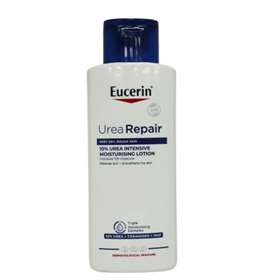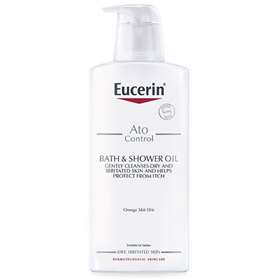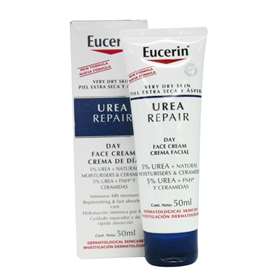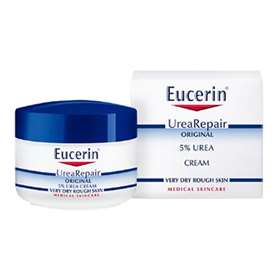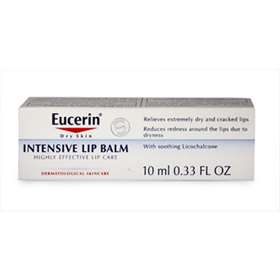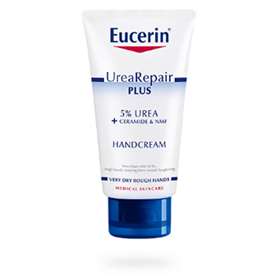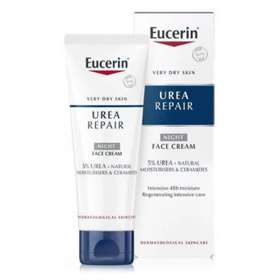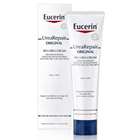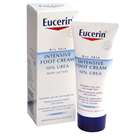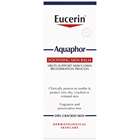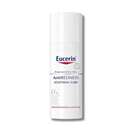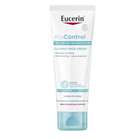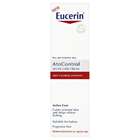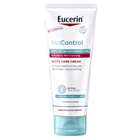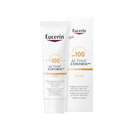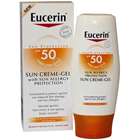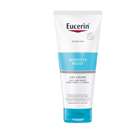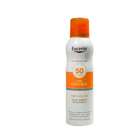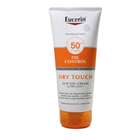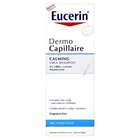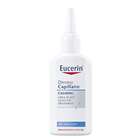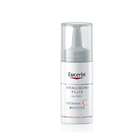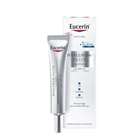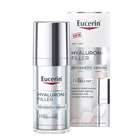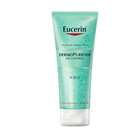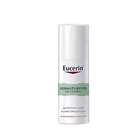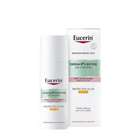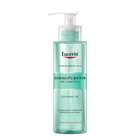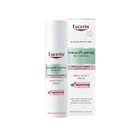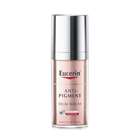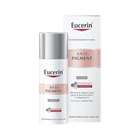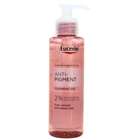1. What is Eucerin?
Eucerin's range of moisturising products, include creams and cleansers suitable for use on the body, face, scalp, hands and feet. They are free from fragrance and colourants and are suitable for sensitive skin. They contain the active ingredient Urea, needed by skin to hold moisture.
2. What does Eucerin treat?
People use Eucerin when they suffer from dry, very dry and atopic dry skin. Use if you have tight, rough, itchy, chapped and scaling skin; conditions common with those who suffer from sensitive skin or have skin conditions such as Eczema, Dermatitis, Ichthyosis, Xeroderma and Hyperkeratosis.
3. How does Eucerin work?
Eucerin treatments contain Urea to provide long lasting moisturisation. In dry skin, the concentration of Urea can drop by 50%. Eucerin products replenish the levels of Urea in skin to increase its capacity to hold moisture.
4. What is Urea?
Urea is a natural substance present in skin and is found in most body fluids. It is one of the skin's essential natural moisturising factors. Urea binds water molecules in the skin and is needed to help maintain healthy supple skin. Urea also helps to reduce itchiness and irritation. The Urea used in Eucerin products is obtained synthetically.
5. Can babies and children use Eucerin?
Eucerin do not make a product range specifically for babies and children, but
Eucerin Dry Skin Bath & Shower Oil and
Dry Skin Shampoo 5% Urea are both suitable.
For children over 3 the Eucerin dry Skin 5% Urea range is recommended. The Intensive 10% Urea Treatments can be used on children over 1 year in conjunction with medical advice.
6. Is Eucerin safe to use whilst pregnant/breastfeeding?
Yes. Eucerin products are safe to use during pregnancy and whilst breastfeeding. Avoid applying to the breasts before giving a feed.
7. What is the difference between Eucerin and other similar skin care products?
Eucerin has a higher level of Urea than most other skincare products. The creams come in different concentrations which allow you to manage different degrees of dry skin.
8. I have sensitive skin, can I use Eucerin?
Eucerin is fragrance free and specially formulated to be suitable for sensitive skin. Please be aware that Eucerin may cause a reaction and so it is advisable to do a small patch test on the inside of the arm before first use.
9. Will Eucerin make my skin greasy?
Eucerin is non-comedogenic which means that it won't clog pores. If you want to treat dry skin on your face, it is best to use
Eucerin Replenishing Face Cream 5% Urea. Because it is non-greasy and lighter, it is less likely that you will break out in spots and pimples.
10. How do I apply Eucerin?
Apply in the direction of hair growth. Avoid a rubbing action and be as gentle and quick as you can. It is best to apply the creams and lotions at least twice a day, once in the morning and once before bed. You cannot overdose on Urea, the skin will only absorb as much as it needs so it is safe to apply as often is required.
For extra dry skin and for treating the scalp, apply the cream generously to the affected area and leave overnight, then carefully wash off in the morning using
Eucerin Dry Skin Bath & Shower Oil or
Dry Skin Relief Shampoo.
11. How long do I use Eucerin for?
The Intensive Treatments are suitable for use first of all until the problem dry skin becomes more manageable. You can then switch down to the
5% Urea creams to maintain healthy skin. It is advisable to continue to use Eucerin to maintain the improvement in the condition of your skin.
12. Will Eucerin help my itchy skin?
The
Eucerin Dry Skin Bath & Shower Oil or
Eucerin Dry Skin Shampoo are particularly useful to help
relieve the itching associated with dry skin. Both contain itch-relieving polidocanol and lipids to replenish skin.
13. Are there any side effects or precautions to take?
- Urea may cause a stinging sensation.
- Avoid applying the stronger Eucerin Intensive 10% Urea Treatments to delicate skin and only use these treatments on children over 3years old.
- All treatments are for external use only.
- Avoid applying to weeping or broken skin.
- Avoid contact with the eyes.
Atopic eczema is one of the most common skin diseases in children: Up to one in five children under 14 years suffers from atopic eczema. Fortunately, it is mostly resolved by puberty. Up to 3 percent of the affected children willcarry on the disease into adulthood.
The exact reason of atopic eczema is unknown, though a strong familial inheritance pattern seems to exist. The skin in atopic eczema is severely dry, rough, chapped, reddened and inflamed. Intensive itch is a cardinal symptom of the disease. It usually appears on flexural joints such as elbows and/or knees and the face. It can vary in severity from day to day or even from season to seasonand concerns especially children.
Though scratching may provide temporary relief from itch, nerve endings in the skin are further irritated. This leads to more itching and the scratching starts all over again, creating an itch-scratch cycle. To help interrupt this cycle it is mandatory to use skin care products on a daily basis which moisturise the skin and replenish what is missing. For acute itchy flare-ups specific and fast acting itch relief products can be of help.
Click here to go back to the top.

